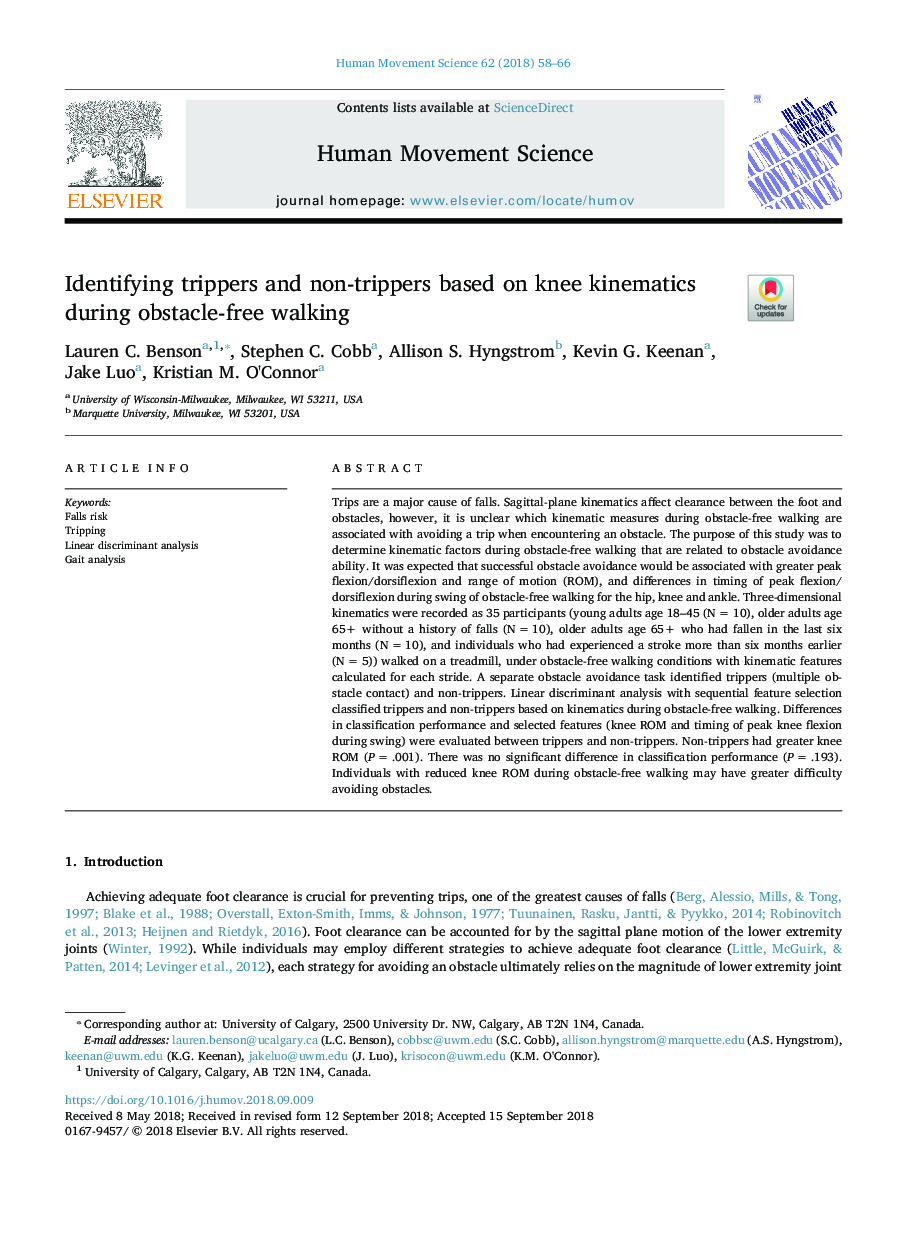| Article ID | Journal | Published Year | Pages | File Type |
|---|---|---|---|---|
| 11031370 | Human Movement Science | 2018 | 9 Pages |
Abstract
Trips are a major cause of falls. Sagittal-plane kinematics affect clearance between the foot and obstacles, however, it is unclear which kinematic measures during obstacle-free walking are associated with avoiding a trip when encountering an obstacle. The purpose of this study was to determine kinematic factors during obstacle-free walking that are related to obstacle avoidance ability. It was expected that successful obstacle avoidance would be associated with greater peak flexion/dorsiflexion and range of motion (ROM), and differences in timing of peak flexion/dorsiflexion during swing of obstacle-free walking for the hip, knee and ankle. Three-dimensional kinematics were recorded as 35 participants (young adults age 18-45 (Nâ¯=â¯10), older adults age 65+ without a history of falls (Nâ¯=â¯10), older adults age 65+ who had fallen in the last six months (Nâ¯=â¯10), and individuals who had experienced a stroke more than six months earlier (Nâ¯=â¯5)) walked on a treadmill, under obstacle-free walking conditions with kinematic features calculated for each stride. A separate obstacle avoidance task identified trippers (multiple obstacle contact) and non-trippers. Linear discriminant analysis with sequential feature selection classified trippers and non-trippers based on kinematics during obstacle-free walking. Differences in classification performance and selected features (knee ROM and timing of peak knee flexion during swing) were evaluated between trippers and non-trippers. Non-trippers had greater knee ROM (Pâ¯=â¯.001). There was no significant difference in classification performance (Pâ¯=â¯.193). Individuals with reduced knee ROM during obstacle-free walking may have greater difficulty avoiding obstacles.
Related Topics
Life Sciences
Neuroscience
Cognitive Neuroscience
Authors
Lauren C. Benson, Stephen C. Cobb, Allison S. Hyngstrom, Kevin G. Keenan, Jake Luo, Kristian M. O'Connor,
